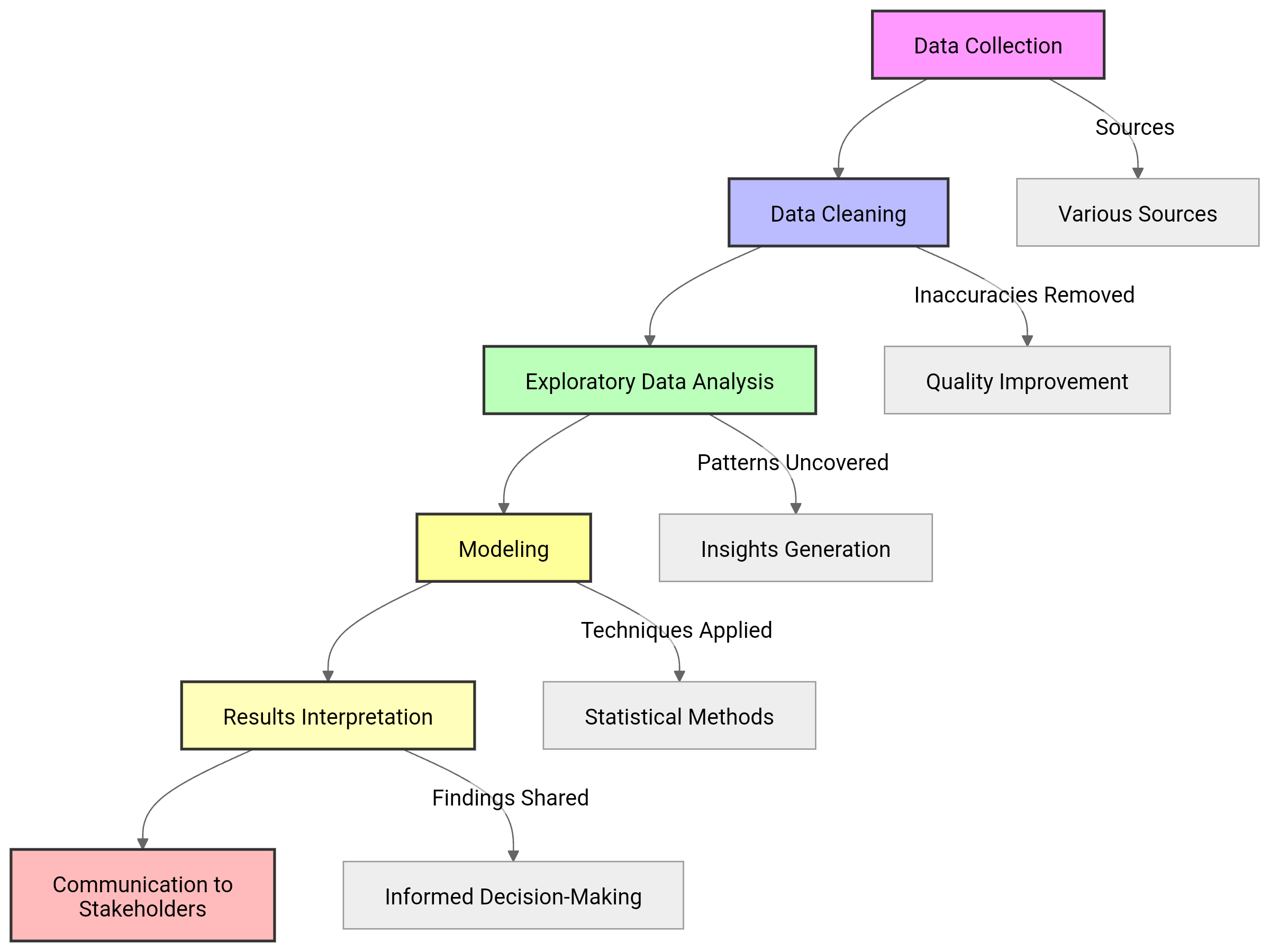Day 1: Embarking on the Data Science Journey
 Anastasia Zaharieva
Anastasia ZaharievaWelcome to the first day of my 30-day data science journey! Today, I’m diving into the fundamentals of data science—what it is, why it’s valuable, and how it’s shaping industries around the world. Understanding this foundation is crucial before getting hands-on, and I’m excited to share my insights and takeaways here on When Math Met Data.
What is Data Science?
Data science is more than just numbers or programming; it’s a powerful tool that helps us uncover hidden insights from vast amounts of data. At its core, data science combines elements of statistics, mathematics, programming, and domain-specific knowledge to solve problems and make predictions. This multidisciplinary approach is what makes data science so valuable and versatile.
Data science professionals often work in distinct but complementary roles:
Data Scientists build models to analyze data and predict future outcomes.
Data Analysts examine data to help businesses make informed decisions.
Data Engineers focus on building the infrastructure for data collection, storage, and retrieval.
Together, these roles create a streamlined pipeline that allows us to extract and interpret data, transforming raw numbers into actionable insights.
The Data Science Workflow

Today, I also explored the typical stages of a data science project. Here’s a quick look at each stage:
Data Collection: The first step involves gathering raw data from various sources—whether from databases, APIs, or web scraping.
Data Cleaning: Cleaning is about handling missing values, removing duplicates, and addressing outliers to ensure data quality.
Exploratory Data Analysis (EDA): This is where we start analyzing data to uncover patterns and trends, using visualizations and descriptive statistics.
Modeling: In this stage, we use machine learning algorithms to create models that help make predictions or classifications.
Interpretation & Communication: Finally, the findings are presented in a way that stakeholders can understand and act on.
This workflow offers a roadmap for making data meaningful—a skill I’m looking forward to mastering over the next 30 days!
Real-World Applications of Data Science
Today’s learning also highlighted some fascinating examples of how data science is applied across industries:
Business: Companies use data science for customer segmentation, predicting sales trends, and personalizing marketing efforts. Netflix and Amazon use AI for advanced customer segmentation, enabling highly personalized experiences. Netflix applies algorithms to analyze user preferences, updating profiles in real-time, and personalizes content recommendations, interface, and even content acquisition based on behavior and demographics. Amazon uses AI for product recommendations, real-time updates, and voice shopping through Alexa, refining user insights with Amazon Personalize and SageMaker. Both ensure data privacy and continually adapt to enhance user engagement and retention through hyper-personalization. You can read more here.
Healthcare: Data science helps in disease prediction, medical imaging, and even drug discovery. For example Generative AI for medical imaging can create infinite synthetic images of the human anatomy. Check out this video if you are interested to find out more about it.
"Generative models can help identify complex disease mechanisms, predict clinical outcomes, and prescribe tailored treatments for patients."
— Prof. Parashkev Nachev, Professor of Neurology at the UCL Queen Institute of Neurology
Finance: Banks and investment firms use data science extensively across several key areas:
Lending: Banks use data science models, incorporating alternative data like deposit history, to improve loan approvals, helping include customers without traditional credit scores.
Fraud Detection: Machine learning models flag unusual activity by analyzing transactions. For instance, JPMorgan Chase uses advanced AI to detect business email compromise attempts.
Cybersecurity: Banks use data devaluing and analytics, like monitoring IP addresses, to protect against cyber threats, though generative AI isn’t commonly applied here.
Customer Analytics: Banks predict customer needs with data science, using sentiment analysis and predictive models to enhance customer service and personalize advice.
Virtual Assistants: Major banks deploy virtual assistants using natural language processing for quick responses to customer queries, though they keep a human in the loop for oversight.
For further information about these five areas read this article.
The impact of data science is profound, touching every sector and creating solutions that weren’t possible before. This potential is what draws me to the field, and I’m eager to develop the skills necessary to contribute to these innovations.
Looking Ahead
Today was all about the “what” and “why” of data science. I feel more informed and ready to tackle the practical side of things. Tomorrow, I’ll dive further into Data Science Applications.
Thanks for reading! If you’re also new to data science, or if you’re a seasoned pro revisiting the basics, feel free to follow along, share insights, or leave comments. I’m excited to see where this journey leads and to connect with others who are passionate about data and math.
Shout-outs:
For the visuals and diagrams in When Math Met Data, I’ve been using Diagramming AI, which has been an incredibly helpful tool for creating clear, professional-quality diagrams that bring data concepts to life.
A special mention of Prof. Parashkev Nachev, the Bulgarian professor of neurology at the UCL Queen Institute of Neurology. His work exemplifies how technology and data can come together to make a real difference in patient care.
Subscribe to my newsletter
Read articles from Anastasia Zaharieva directly inside your inbox. Subscribe to the newsletter, and don't miss out.
Written by
